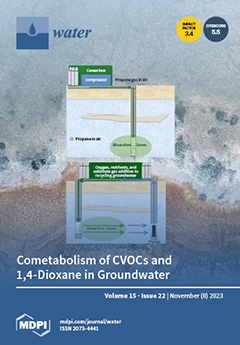The roughness of a river’s boundary significantly influences the sediment transport process and the ultimate configuration of the river’s stable cross-section. This interplay between boundary roughness and river morphology is crucial to a river’s overall behavior and form. This study aims to analyze the influence of the relative roughness of riverbanks to a riverbed
on the equilibrium form of alluvial rivers using a variational method. The results show the following: (1) As the parameter
transitions from smaller to larger values, noteworthy variations are observed in a river’s characteristics. Specifically, there is a discernible reduction in the calculated maximum sediment discharge, coupled with a corresponding expansion in the optimal width–depth ratio. For instance, when
changes from 1 to 0.1, the optimal width–depth ratio increases by 45%, while the calculated maximum sediment discharge experiences a decrease of 1.62%. (2) An examination of hydraulic geometric relationships, derived by assigning distinct values to the relative roughness of riverbanks to the riverbed, highlights the significant influence of this relative roughness on the ultimate equilibrium configuration of the river channel. Remarkably, this effect remains consistent and stands independently of other variables such as sediment discharge, flow discharge, channel gradient, and sediment size. (3) The critical and average hydraulic geometric relationships deduced in this study closely align with previous research findings. Notably, this research contributes to addressing the existing gap in understanding the mechanistic underpinnings of how river boundary conditions impact the equilibrium forms of rivers, thereby advancing our knowledge of river morphology. Nevertheless, it is imperative to emphasize that while this study provides valuable theoretical insights, the practical application of these findings in the context of river morphological evolution necessitates further in-depth research. It calls for a more comprehensive exploration of the transition from theoretical constructs to real-world applications, thus promoting a deeper understanding of the dynamics that shape river systems.
Full article





